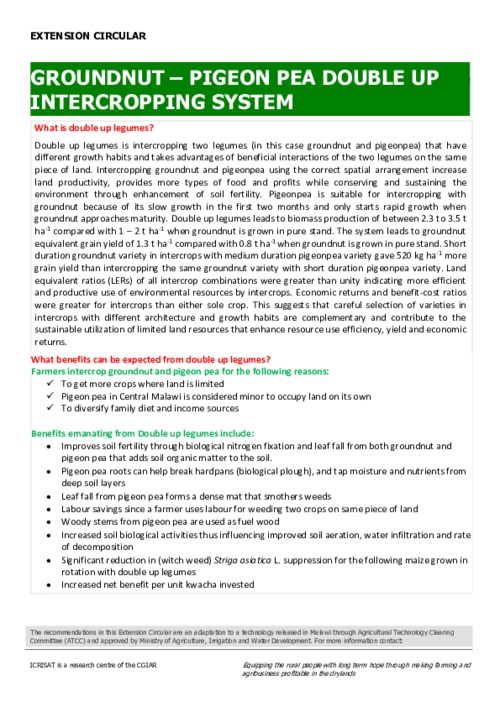Resource information
Double up legumes is intercropping two legumes (in this case groundnut and pigeonpea) that have different growth habits and takes advantages of beneficial interactions of the two legumes on the same piece of land. Intercropping groundnut and pigeonpea using the correct spatial arrangement increase land productivity, provides more types of food and profits while conserving and sustaining the environment through enhancement of soil fertility. Pigeonpea is suitable for intercropping with groundnut because of its slow growth in the first two months and only starts rapid growth when groundnut approaches maturity. Double up legumes leads to biomass production of between 2.3 to 3.5 t ha-1 compared with 1 – 2 t ha-1 when groundnut is grown in pure stand. The system leads to groundnut equivalent grain yield of 1.3 t ha-1 compared with 0.8 t ha-1 when groundnut is grown in pure stand. Short duration groundnut variety in intercrops with medium duration pigeonpea variety gave 520 kg ha-1 more grain yield than intercropping the same groundnut variety with short duration pigeonpea variety. Land equivalent ratios (LERs) of all intercrop combinations were greater than unity indicating more efficient and productive use of environmental resources by intercrops. Economic returns and benefit-cost ratios were greater for intercrops than either sole crop. This suggests that careful selection of varieties in intercrops with different architecture and growth habits are complementary and contribute to the sustainable utilization of limited land resources that enhance resource use efficiency, yield and economic returns.


